The Black Phoebe is a plump yet small songbird. They have medium-length square tails, large heads, and thin, straight bills.
Black Phoebes are common in their range and prefer to stick around human development areas and near sources of water.
They frequently perch in the open and stay low to the ground, so if you’re looking for this bird, make sure to scan low shrubs, rocks, and branches along the edges of lakes, streams, the seashore, and estuaries.
On this page
Identification
The Black Phoebe is overall a sooty gray on the chest and upper parts and has a black head that is slightly darker than the rest of its body. The wing feathers are lined with pale gray, and the belly is white.
These birds are 6.3 inches long, weigh 0.5 to 0.8 ounces, and have a wingspan of 10.5 to 11 inches.
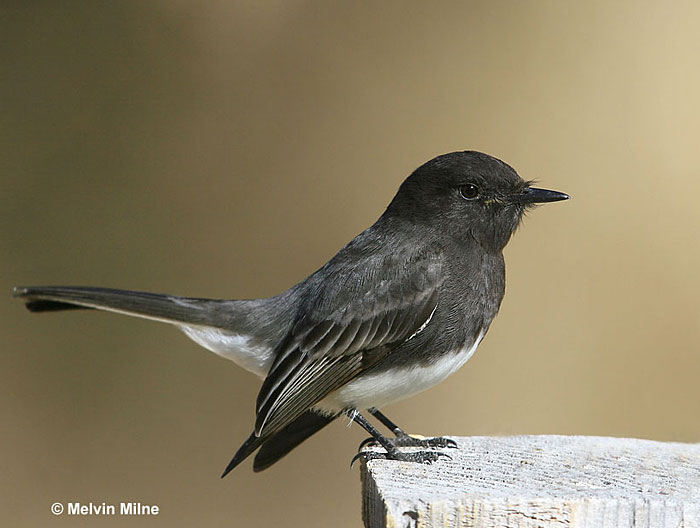
Female Black Phoebes look identical to male Black Phoebes.
Juvenile Black Phoebes look very similar to adults. However, they have one main difference. Juveniles have buffy wing bars.
White-winged Black Phoebes in the northern portions of their range have white bellies and are sooty gray overall.
Food
Black Phoebes primarily consume insects and other arthropods. Their diet consists of spiders, bees, flies, wasps, beetles, grasshoppers, dragonflies, damselflies, and termites.
Black Phoebes perch at most 7 feet off of the water or the ground and keep an eye out for prey. Once they spot prey, they charge from their perch to either glean the prey as it crawls, snatch it from the surface of a pond, or take it from the air.
They’re even capable of catching minnows, a small fish, from just below the surface of the water. Occasionally, these birds will eat small berries. Black Phoebes mostly feed during the day but will sometimes hunt for insects at night around lights.
Nesting and Eggs
The male Black Phobebe is the one who finds and shows potential nesting sites to the female. He’ll show them to her by hovering over them for 5 to 10 seconds.
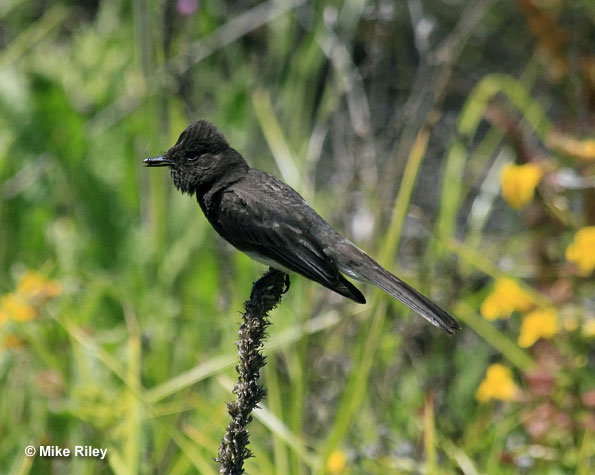
The female Black Phoebe is the one who makes the final decision about the nesting spot. These birds used to nest in streamside boulders, tree hollows, and sheltered rock faces but have adjusted to using human-made structures like irrigation culverts, abandoned wells, and building eaves.
It’s common for these birds to use the same site and sometimes even the same nest every year.
Black Phoebe nests have a mud shell and are lined with plant fibers. It’s usually plastered to a wall within 1 or 2 inches of a protective covering. The nest measures 3 to 8 inches tall and 3 to 7 inches wide.
The inner cup of the nest is about 1 inch deep and 2.5 inches wide. Nests are usually 3 to 10 feet off of the ground. The female is the only one who builds or rebuilds the nest; it takes her 1 to 3 weeks to complete.
- The clutch size is 1 to 6 eggs.
- Black Phoebes have 1 to 3 broods per breeding season
- Egg length can be anywhere from 0.7 to 0.8 inches (1.7 to 2 centimeters)
- Egg width can be anywhere from 0.5 to 0.6 inches (1.3 to 1.5 centimeters)
- The incubation period is 15 to 18 days
- The nestling period is 18 to 21 days
- Eggs are a glossy white; they sometimes have light spots around the bigger end.
Current Situation
Black Phoebes are a common bird whose numbers have been regularly increasing by over 2% every year from the late 1960s to 2019. Their estimated number of mature birds is 5 million.
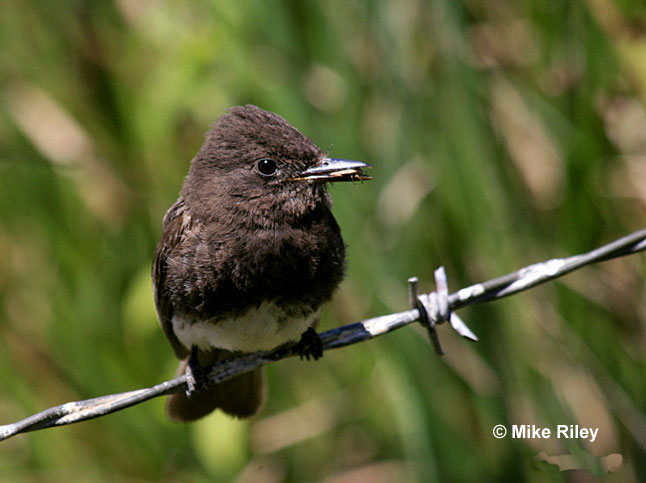
Black Phoebes have adapted well to the increase in preferable nesting sites brought along by human development, including bridges, buildings, and culverts. However, their reliance on water means protecting wetland habitats, and water quality is vital.
Black Phoebes can be found along riverbanks, on beaches and cliffs of the Pacific Ocean, lake shorelines, parks, ephemeral ponds, cattle tanks, and backyards.
They require a mud source so they can build their nest. In the winter, they inhabit similar areas, sometimes at lower elevations.
Also Included in Black & White Birds Collection
Facts
- Black Phoebes have a diet that mainly consists of insects. However, they have been seen catching minnows that are close to the surface of the water. It may even feed the minnows to their nestlings.
- Male Black Phoebes are the ones who find potential nesting sites. Then, they’ll show them to the female by hovering over each spot for 5 to 10 seconds. But, in the end, the female Black Phoebe is the one that makes the final decision on the site and does all the nest building.
- The oldest recorded Black Phoebe lived to be at least 8 years old.
Similar Species
The Black Phoebe has features that are similar to other bird species. Here are some similar species:
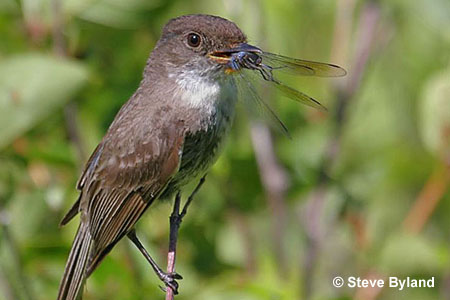
Eastern Phoebe
Black Phoebes and Eastern Phoebes don’t overlap in their range, except for areas in the souther-central part of Texas.
Black Phoebes have dark heads and breasts.
Eastern Phoebes have gray heads and whiteish breasts.
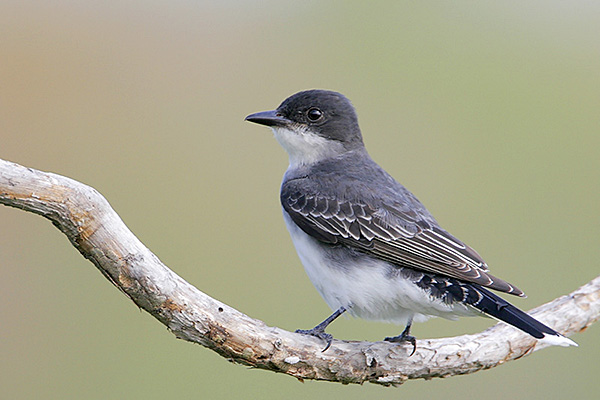
Eastern Kingbird
Black Phoebes are smaller than Eastern Kingbirds. Their plumages look strikingly different as well.
Black Phoebes have plack plumage all the way down to their breast, while Eastern Kingbirds have a white chest.
For Eastern Kingbirds, their plumage starts turning white down from their bills.
Eastern Kingbirds have a wider range in Northern America, they can be spotted in the eastern side of the United States and in the western side of Canada, while Black Phoebes are common in southern parts of the U.S.
Frequently Asked Questions
Are Black Phoebes rare?
No, Black Phoebes are not rare. Their estimated breeding population is 5 million, making them a common and widespread bird.
Where do Black Phoebes live?
Black Phoebes can be found along riverbanks, on beaches and cliffs of the Pacific Ocean, lake shorelines, parks, ephemeral ponds, cattle tanks, and backyards. They require a mud source so they can build their nest. In the winter, they inhabit similar areas, sometimes at lower elevations.
Why do Black Phoebes flick their tails?
Black Phoebes flick their tails to let predators know they’ve been seen. Because the phoebe sees them, they’re warning the predator that it’s not worth pursuing.
What does a Black Phoebe symbolize?
Phoebes are a part of the flycatcher family. However, flycatchers and Phoebes have their own symbolism. Flycatchers represent deceiving and diverting enemies, while Phoebes symbolize wisdom and hidden knowledge.

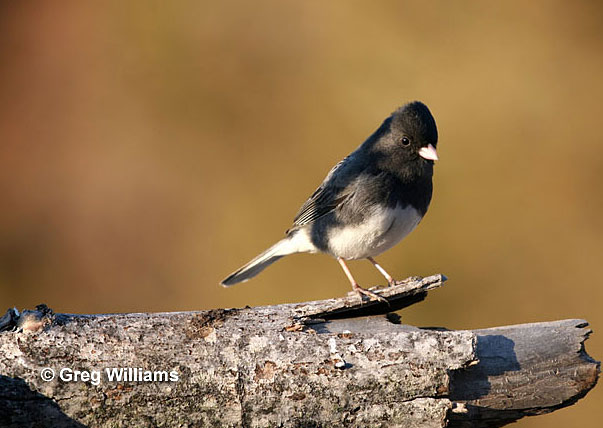

Kat Baker
Friday 8th of December 2023
I have had a Black Phoebe that has lived in her mud nest above my frontdoor for two years! I was going to pull the mud nest down, but she comes back to the nest every night. What is up with this situation? I live in Northern California.
Patrick O'Donnell
Friday 8th of December 2023
@Kat- That Black Phoebe must have found the perfect nesting spot above your door. Not the best spot for you though! If it becomes too much of a problem and the bird isn't present, you could remove it. However, to prevent the phoebe from nesting right above your door again, you may need to nail something there to make it tough for the bird to build a nest there.
connie
Tuesday 3rd of October 2023
I am 80% sure I just saw a black phoebe in my yard in Palm beach fl, is that possible?
Patrick O'Donnell
Thursday 5th of October 2023
@Connie- Since Black Phoebes do not normally migrate, seeing one that far from its normal range would be very unlikely. Could it have been an Eastern Phoebe or maybe an Eastern Wood-Pewee? If you see this mystery bird again, see if you can get a photo of it!